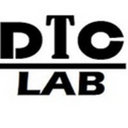Chemometric modeling of aquatic toxicity of contaminants of emerging concern (CECs) in Dugesia japonica and its interspecies correlation with daphnia and fish: QSTR and QSTTR approaches.
Keywords
Abstract
The contaminants of emerging concern (CEC) are universally detected in surface water and soil. They can affect the wild life, and their subsequent translocation through the food chain can affect human health, which is an issue of serious concern. Very few amounts of ecotoxicological data are available on the environmental behavior and ecotoxicity of CEC, thus modeling approaches are essential to bridge the existing gap in experimental data. In this present study, we have developed quantitative structure-toxicity relationship (QSTR) models using a data set of 75 compounds for the prediction of aquatic ecotoxicity of CECs on fresh water planarian (Dugesia japonica) by partial least squares (PLS) regression algorithm using simple molecular descriptors selected by genetic algorithm approach. We also explore the correlations between toxicity against D. japonica and those against daphnia (D. magna) and fish (P. promelas), and these were improved on addition of a few molecular descriptors (B08[C-O] and B09[N-O] in case of daphnia and C-006 and H-052 in case of fish) which allowed us to develop predictive interspecies quantitative structure toxicity-toxicity relationship (QSTTR) models, allowing to extrapolate data from one endpoint to another endpoint. The QSTR (Q2LOO ranging from 0.630 to 0.720 and R2pred ranging from 0.723 to 0.798) and QSTTR (Q2LOO = 0.60 and 0.67, R2pred = 0.88 and 0.84) models have desirable statistical qualities and acceptable internal and external validation measures, meeting rigorous criteria of different validation metrics and showing acceptability for regulatory purposes as proposed by Organization for Economic Cooperation and Development (OECD). Consensus predictions were also performed based on multiple models generated in this study by using the "Intelligent Consensus Predictor" (ICP) tool to enhance the prediction quality for external set compounds.


